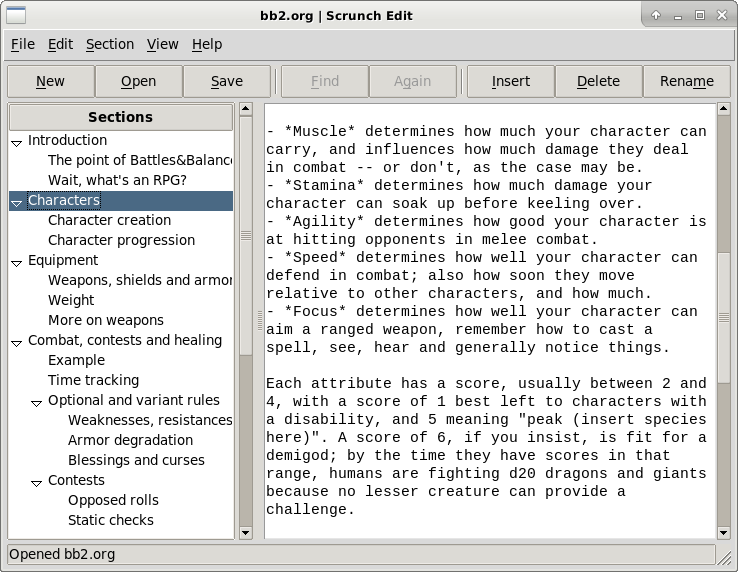
A two-pane outliner for Org Mode and Markdown files.
Often a text editor is more than enough to handle even long, complex documents. But past a certain point it gets hard to navigate the structure. This is where outliners come in. It's just that most outliners use their own file formats, and have poor or non-existent support for import and export. We can do better.

Scrunch Edit is a two-pane outliner with as many main goals:
It otherwise acts much like a simple text editor.
This archive contains Scrunch Edit TT, a new port that enables easy bundling. It hasn't been tested as much as previous versions. Please back up your data:
As of 6 October 2023, version 2.6 comes with better file dialogs on Linux and the new Prefix Lines command. See also:
Scrunch Edit is open source under the MIT license. The user interface should be fairly obvious. See the usage notes below.
Running Scrunch Edit TT from source requires Tcl/Tk 8.6 with Tklib. Both are available on most Linux distributions, or else from the tcl-lang.org website.
Recommended screen resolution: 800x600.
Scrunch Edit guesses formats based on file extensions. There's no other way short of separate "open" commands, since the same text file can be interpreted in different ways based on context.
While an effort has been made to provide key combos for most functions, Scrunch Edit is best used with mouse and keyboard together.
Scrunch Edit is based on knowledge gained from TkDocs.com; it borrows much from OutNoted.
You can usually find me on IRC, in the #ctrl-c channel of tilde.chat, or else on Mastodon. Would love to hear from you.
This was the "real" Scrunch Edit until 25 December 2022.
See also:
This edition requires a Python runtime. Python comes preinstalled on the Mac and most Linux distributions; Windows users can get it from the python.org website. You'll also need the Tkinter module, which is bundled with most Windows runtimes and preinstalled on the Mac. On Linux you might need to add it yourself: look in your package manager for something called "tkinter", "python-tk" or the like.
Python version 3.x is preferred, but 2.7 should work as well.